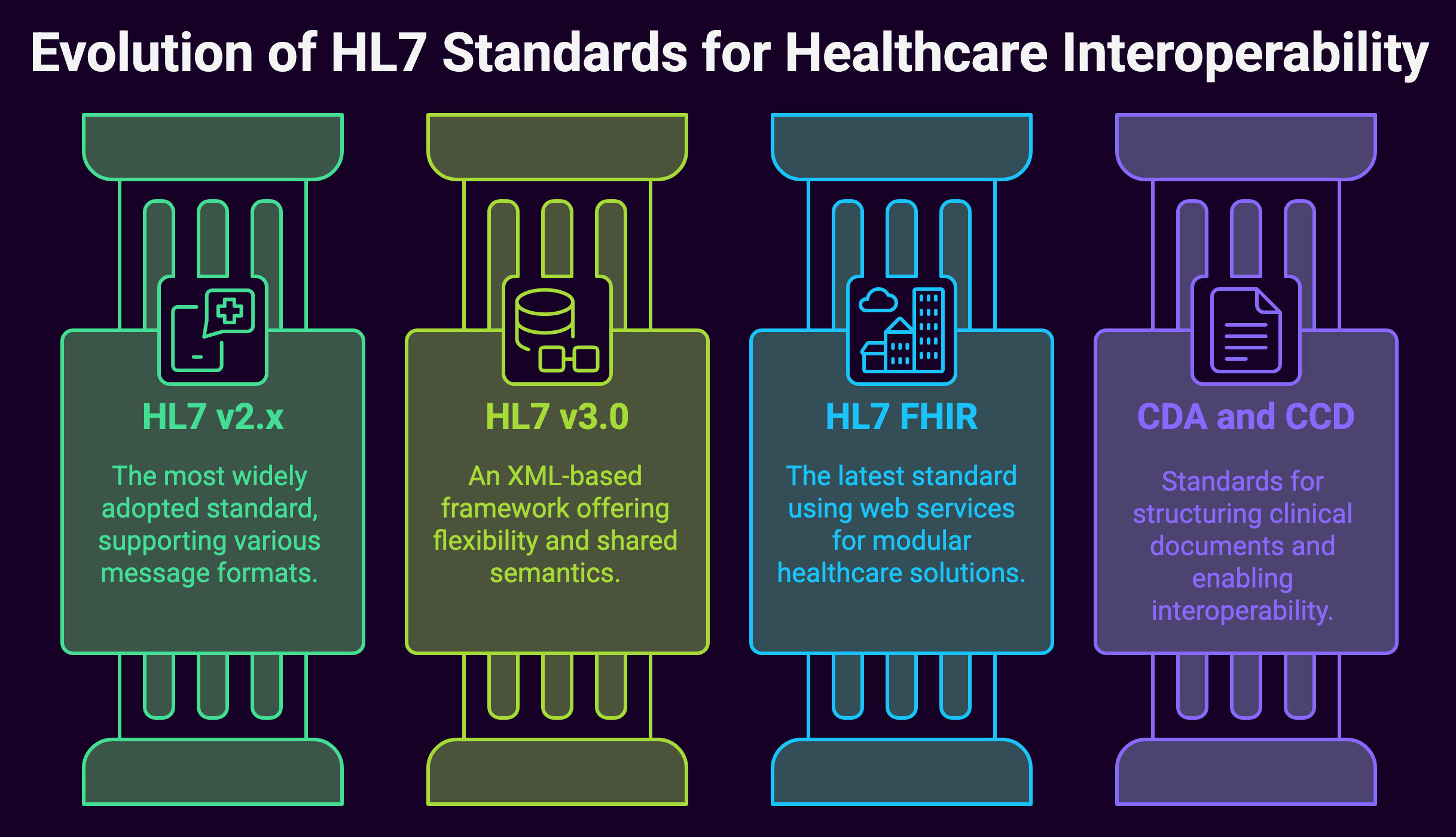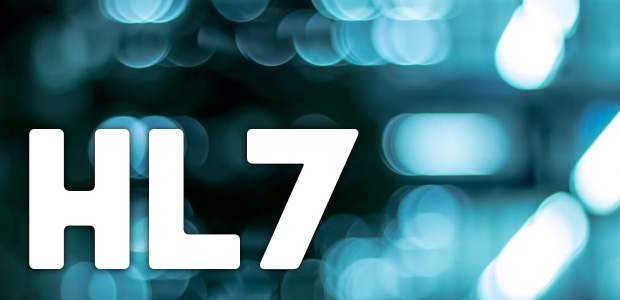Healthcare providers today rely on a diverse set of information systems to manage patient data, including electronic health records (EHRs), laboratory information systems (LIS), billing systems, and imaging systems. A major challenge is exchanging information seamlessly across these disparate systems. HL7 provides a framework to facilitate this interoperability through standardized messaging formats and protocols.
We offer an overview of HL7, its key standards, and implementation in modern healthcare environments.
What is HL7?

HL7 stands for Health Level Seven, a set of international standards for transfer of clinical and administrative data between software applications used across the healthcare ecosystem. HL7 aims to provide a universal structure and language enabling healthcare information systems to communicate with each other easily.
The HL7 standards apply to both traditional electronic data exchange and newer service-oriented architectures. The protocols apply to transactions within a single hospital system or between different healthcare organizations.
Key HL7 Standard Versions
HL7 has put forth several versions of messaging standards over the years, with each new version building on the previous one.

HL7 v2.x
The most widely adopted messaging standard globally, especially among large healthcare systems. It provides specifications for message structure, data types, and interface components. V2.x supports textual, structured, and XML-encoded messages.
HL7 v3.0
A newer XML-based messaging framework that provides greater flexibility. It utilizes shared reference information models for different data domains like demographics, clinical genomics, billing etc. v3 allows creating messages that follow these shared semantics.
HL7 FHIR
The newest standard, Fast Healthcare Interoperability Resources (FHIR), is based on simple, granular web services. It leverages latest web standards and architectures like RESTful APIs, OAuth2 security, and JSON encoding. The modular, plug-and-play components of FHIR improve implementation.
CDA and CCD
HL7’s Clinical Document Architecture provides document markup standards to structure clinical documents like discharge summaries and progress notes. It allows semantic interoperability using metadata. Care Record Summary (CCD) is an XML-based CDA implementation for healthcare data exchange.
Benefits of HL7 Standards
Adopting HL7 standards provides the following advantages:
- Improved system interoperability – Allows healthcare IT systems like etc. to connect and share data smoothly.
- Maintained data integrity – Structured messaging preserves all data and contextual details during interface transmissions.
- Reduced errors – Standard formats eliminate inconsistencies that introduce errors when handling data manually.
- Increased efficiency – Electronic transactions are faster and more cost-effective than manual processes.
- Improved analytics – Aggregated data enables better clinical, operational and financial analytics.
- Enhanced patient safety – Availability of integrated patient data results in optimal treatment decisions and reduced risks.
- Supported regulations – HL7 interfaces help meet compliance requirements related to data exchange and patient privacy.
- Accelerated workflows – Structured electronic data exchange improves clinical and administrative workflows.
HL7 Interface Implementation
To implement interoperability using the HL7 standards, interfaces must be established between the various healthcare IT systems that need to share data.
This involves:
- Planning the scope, systems involved, use cases, and requirements.
- Designing the interface architecture, protocols, message formats etc. based on HL7 guidelines.
- Developing the interface software, testing cases, validations, and optimizations.
- Deploying the interfaces into the production systems and applications.
- Maintaining the interfaces, managing upgrades, enhancements, and bug fixes.
- Monitoring the interfaces to ensure continued optimal performance and data integrity.
These steps require expertise with the HL7 specifications for appropriate application and specialized interface engineering skills. Most interfaces are customized based on the systems involved and the healthcare organization’s needs.
HL7 Interfaces in Healthcare Settings
Some examples of HL7 interfaces commonly implemented within healthcare organizations include:
- EHR to EHR interfaces to consolidate patient records across facilities or departments
- Lab system to EHR interfaces to incorporate test results into patient charts
- EHR to billing system to transfer encounter data for claim generation
- Hospital admission system to reimbursement system to submit insurance claims
- Patient monitoring device to EHR for integrating real-time vitals into charts
- Public health agency system interface to share population health data
- Immunization registry system to EHR to import vaccination history
- Referral management system interfaces to coordinate care across providers
- Patient portal app integration to make health data available to consumers
As health systems grow and acquire new technology, robust HL7 interfaces become essential to unlocking the full value of health IT investments through seamless system interoperability.
IHE Framework for HL7 System Integration
The Integrating the Healthcare Enterprise (IHE) initiative provides a complementary framework to facilitate using HL7 for system integration.
IHE provides implementation guides with system actors, transactions, and workflow scenarios. It defines standard actors that perform actions like “Patient Identity Source”, “Order Placer”, “Report Repository” etc. IHE models help implement HL7 interfaces consistently.
IHE also outlines integration profiles that provide coordinated implementation across multiple systems for specific clinical purposes like lab automation, radiation oncology workflows, patient care coordination etc.
Adopting IHE together with HL7 provides a robust, methodical approach to achieving interoperability goals.
HL7 FHIR – The Next Generation of Healthcare Messaging
The newest HL7 standard, Fast Healthcare Interoperability Resources (FHIR), aims to address limitations of older standards and accelerate application integration.
Key features include:
- Lightweight RESTful APIs instead of complex enterprise messaging protocols
- Use of JSON for easier data encapsulation and parsing
- Granular data resources for flexible access and exchange
- Easy serialization/deserialization and conversion to/from other formats
- Modern web standards including OAuth2 security, compression, CORS etc.
- Accessible documentation and schema definitions
- Backward compatibility with older version message formats
With its versatility, simplicity and developer-friendly nature, FHIR offers an evolved approach to healthcare interoperability as demands grow.
Summary: Enabling Healthcare Interoperability Through HL7 Standards
Achieving seamless data exchange between the many healthcare IT systems in use today is critical for improved care coordination and outcomes. HL7 provides a unifying interoperability framework to make this possible through its messaging standards and implementation guides.
As healthcare delivery grows more fragmented, HL7 will only increase in importance for securing patient data integrity. HL7 FHIR introduces a new level of API-driven flexibility and developer experience. Healthcare CIOs and IT architects should actively embrace HL7 along with IHE profiles to advance system interoperability and data accessibility across their organizations.

